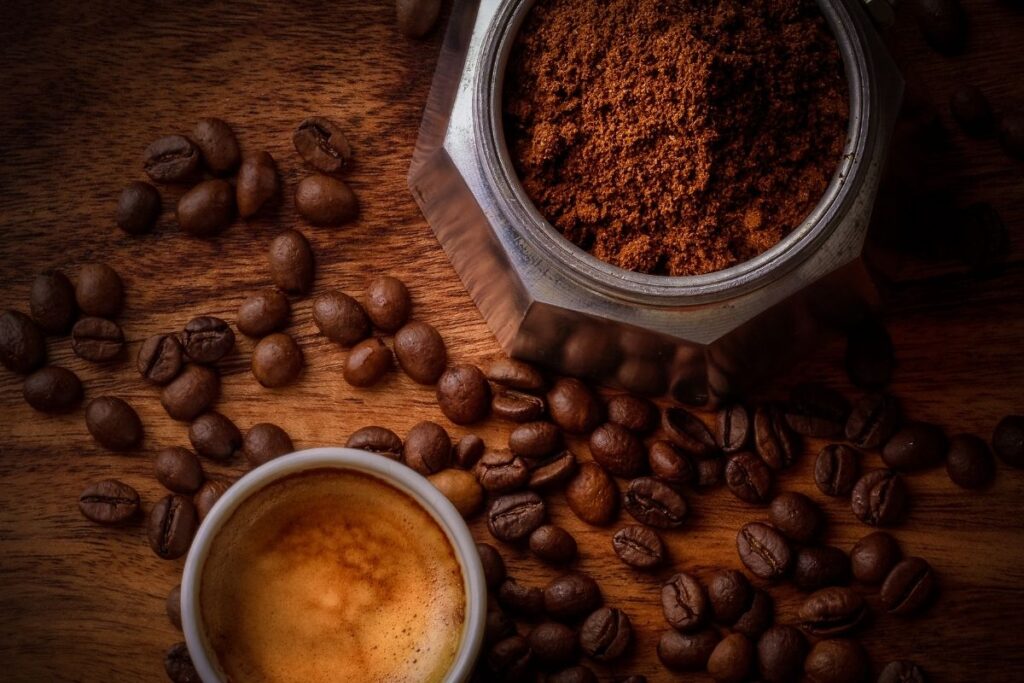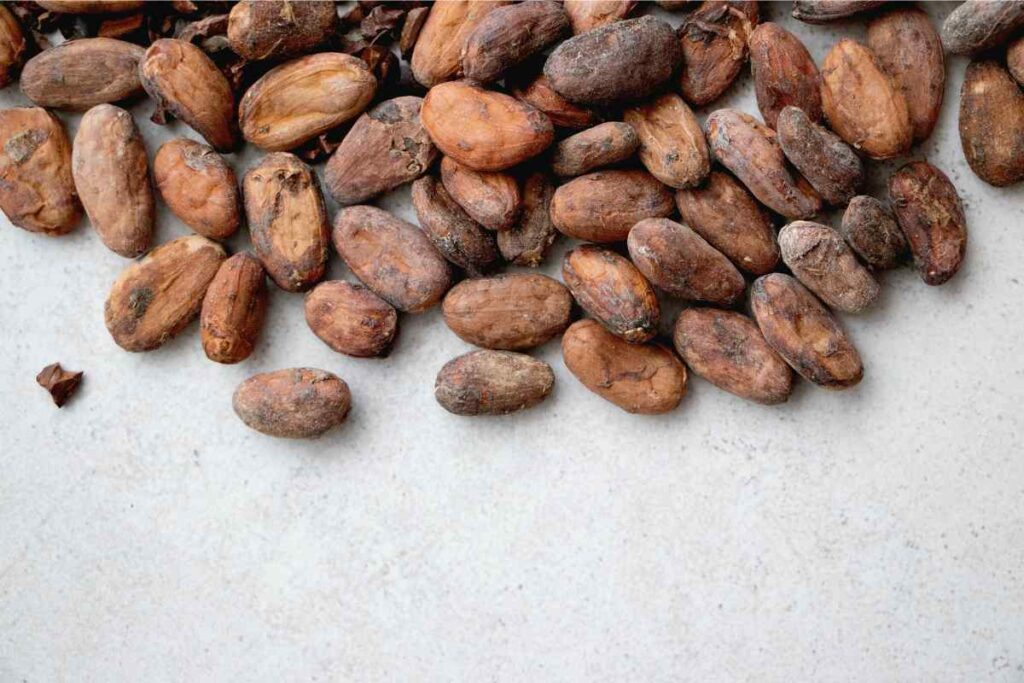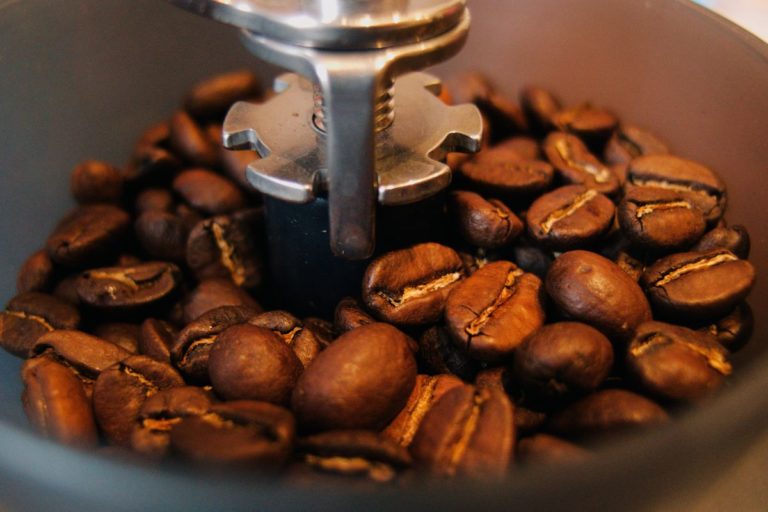Coffee and chocolate…you must be thinking: well, I drink them all the time at the coffee shop in the most famed coffee drink in the world – a mocha. You ask yourself, “They must be related, right?”
Read on to learn more about coffee beans vs. cocoa beans.
To answer your question, one of the only similarities between coffee and cocoa beans is the fact that we describe them both as beans, when in fact, they are both seeds, or pits, of different plants.
Coffee “beans” are found as the pits of red berries, whereas cocoa beans are found as seeds in the cocoa tree.
By Andrew.
Affiliate disclosure
This page may contain affiliate links – we may earn a small commission when you make a purchase through these links. This is at no extra cost to you.
But they taste so good together, how could they not be related? Well, just because they taste good together does not mean automatically that they are related.
Key Differences Between Coffee Beans and Cocoa Beans
In fact, they each have distinctive properties that identify them as their own species of plant, and it was discovered that when mixed together you have a taste unlike any other, with each element complementing the other in such a way that the taste is indescribable.
It is important to differentiate the two by the fact that coffee is grown naturally and cocoa, or chocolate is manufactured from cacao pods found on the cacao tree.
Key differences between the coffee bean and cocoa, or cacao beans, include appearance, process of production, smell, and flavor.
Read more here about coffee beans versus cocoa beans.
4 Coffee Gear & Coffee Recommendations
- Breville Barista Pro – An excellent manual espresso machine for home use
- Philips 3200 Series Espresso Machine – Easy-to-use fully automatic coffee machine for small office or home use
- Rancilio Egro ONE Touch – High capacity fully automatic commercial coffee machine for professional use
- Koa Coffee – Premium hand-picked Hawaiian coffee. Have you tried American coffee yet?

Appearance
Let’s first start with the appearance of coffee trees versus the appearance of cacao trees.
Both types of trees grow in similar areas of the globe close to the equator.
Despite this one fairly obvious unifying fact, the trees are completely unique.
Coffee Trees vs. Cacao Trees
Coffee trees are smaller and produce more fruit. They are grown in tropical areas, are typically six to fifteen feet tall, and make about 4,000 coffee beans a year.
The actual multicolored fruit of coffee trees (which depends on the variety) are known as cherries. Every cherry contains two coffee beans.
The beans themselves have a white color, but are later roasted and that is how they appear brown like you know them.
Cacao trees are taller than coffee trees, but produce less fruit, and they are often called “trees of the gods.” Grown in West Africa, Latin America, and Southeast Asia, they are about fifteen to twenty-five feet tall and make about twenty to thirty cacao pods each year.
These pods are the fruit of cacao trees and every pod has twenty to fifty beans on the inside.
The beans are made into chocolate by drying and fermenting them, then are ground up.
Coffee Production
After being harvested, through the hand-picked method (more so for specialty coffee) or strip picked, where all the fruit is removed from the tree regardless of ripeness (more so for low-grade coffee found in grocery stores) coffee cherries are gathered to be processed.
Different processes of coffee production include natural, wet, dry, anaerobic, and honey. Each process removes the pulp from each coffee cherry and the beans are then dried in the sun to get out all of the excess moisture.
The most traditional way of processing coffee is the natural way. For the natural way, cherries are dried with all of the pulp still covering the beans. After they are dried, the pulp is then mechanically removed and the beans are ready to be roasted.
Harvesting And Processing Cacao Beans Present More Of A Challenge To Farmers
Harvesters will always hand-pick pods from the cacao tree, as the pods all ripen at different times to varying degrees.
They have to be careful not to cut the tree as this will mean that the tree will not blossom in that spot the following year.
They will then cut the pods open and retrieve the seeds, or beans.
The beans are then fermented in wooden boxes. After that, they are dried in wooden boxes on patios or a similar surface.
Then, they are aged for thirty days, up to a full year before being roasted used for chocolate.

Smell
The aroma, or smell, of coffee beans and cacao beans are produced by the roasting process.
Both coffee beans and cacao beans benefit from roasting through even heat, but the process is different for each.
Coffee requires a “hot and fast” approach with temperatures exceeding 400 degrees Fahrenheit, whereas cacao beans require more of a “low and slow” process with temperatures ranging from 250 to 275 degrees Fahrenheit. This is due to the size of the beans themselves.
Cacao beans can be described as having a pleasant smell, with floral and sweet notes.
Coffee beans, depending on roast level, will often smell kind of nutty and lightly caramelized.
Flavor
The flavor of coffee beans and cocoa beans also depends on the roast.
Cocoa beans only have trace amounts of sugar in them and roasting them produces a bitter flavor.
It is only when sugar is added to confections by manufacturers that chocolate has a sweet taste.
Roasted coffee beans can be sweet, mainly when they are lightly roasted.
Dark roast coffees have more of a bitter taste., with hints of dark chocolate.
Conclusion
Coffee beans and cocoa beans are unique as they come from two different species of plant.
From their appearance, method of production, smell and flavor, they differ greatly, but when combined they have wonderful flavors that complement each other so well.
Next time you drink a mocha, think of these characteristics of coffee beans and cocoa beans and celebrate the flavor combination.
Photos by Toocapic, Janko Ferlic and Tetiana Bykovets









